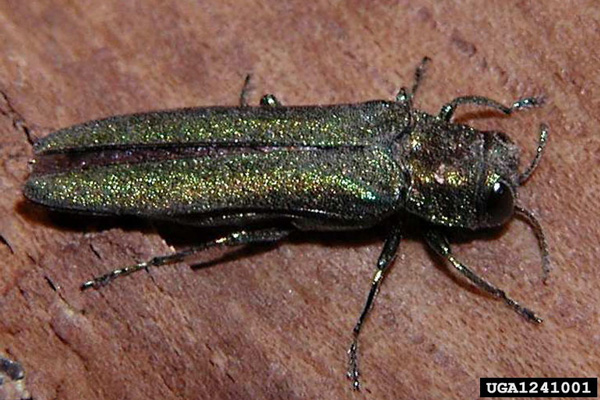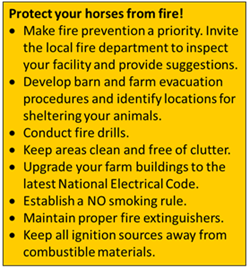
Horse farm owners are always interested in maintaining not only aesthetic, but healthy environments on their properties and in the areas where they ride and compete. An insect invader has been killing ash trees, which means the threat of wildfires in the affected areas will be greater than normal. In this article from the University of Kentucky’s Equine Disease Quarterly, Melissa Newman, PhD, of the Department of Animal and Food Sciences, discussed the problem of the emerald ash borer.
Horse owners recognize that fire prevention is critical on the farm, but may overlook threats from insect infestation on surrounding trees. The emerald ash borer (EAB), Agrilus planipennis Fairmaire, is a beetle first discovered in 2002 in Michigan and Windsor, Ontario, and this insect has killed ash trees by the tens of millions in North America. According to the US Department of Agriculture, Animal and Plant Health Inspection Service, the beetle has been confirmed in 20 states as of Aug. 5, 2013 (see map).

While the threat of wildfires is unfortunately common in the western U.S., states with EAB infestation may have an ever-increasing threat of larger wildfires.
The EAB has no natural predators and the use of insecticides is expensive and has variable results, depending on the product. As a result, the continued threat of this pest moving across the country is very real. During the EAB life cycle, the adult beetle will feed on the foliage of the ash tree and lay eggs on the bark of the tree. The resulting larvae hatch from the eggs and bore into the bark of the tree, where they remain until spring, feeding on the critical inner bark, thus interfering with the tree’s ability to utilize nutrients and water. This ultimately leads to the death of the tree. In the spring the adults emerge from the tree and fly a short distance to continue the life cycle.
The dead ash trees resulting from EAB infestation constitute a potential fire hazard, and they should be removed from farms to protect horses and property. Check with a Cooperative Extension Agent on the legal ways to dispose of trees, as transporting them to a secondary location can also spread the pest. Fire risk increases during times of drought and when abundant fuel sources are available, such as the case when dead trees and shrubs are present.
In an effort to mitigate the hazard of wildfire on the farm, owners should establish a defensible space by removing flammable vegetation from around houses, barns, machinery and horses. The incorporation of fuel breaks, strategic grazing and landscaping with non-combustible materials and fire resistive plants can help reduce the risk from disaster (see sidebar below).
Fire can spread by hot embers dispersing to new fuel sources including buildings, hay, bedding and manure. Research from the Institute for Business and Home Safety and others has indicated that buildings located less than 15 feet apart are particularly vulnerable to this type of fire spread. Proper planning of new construction including the use of fire resident materials can reduce this threat.
The likelihood of a wildfire increases dramatically when the fire danger is moderate to high combined with a large number of dead trees in forested areas. As the devastating 2013 US summer wildfires have so dramatically shown, wildfires can be started by lightning strikes, humans (deliberately or accidentally) and sparks from vehicles and machinery. Having a plan and implementing fire prevention practices are critical to limiting losses of human and animal life, buildings and land.



